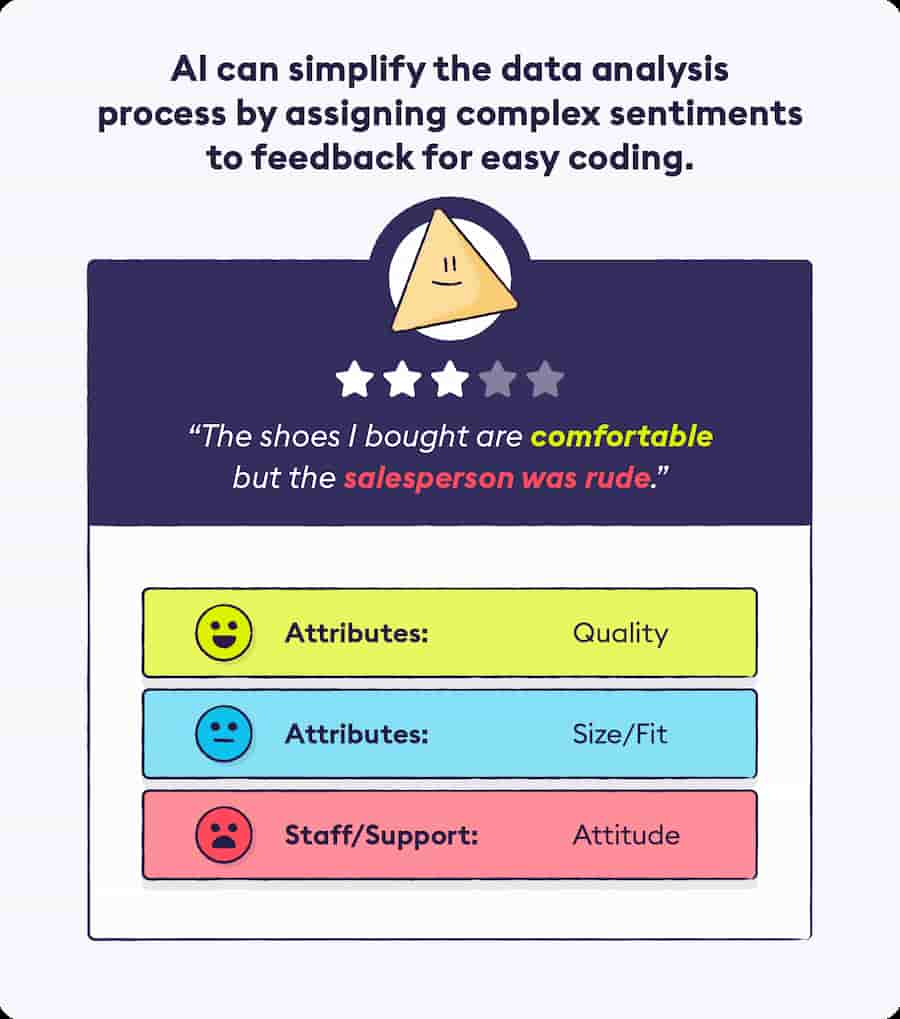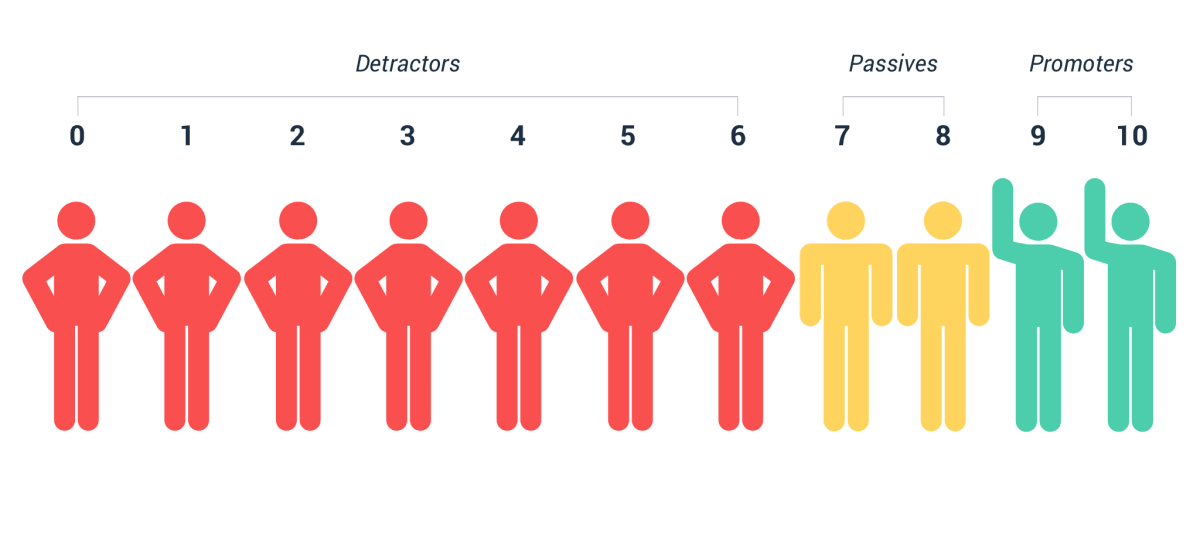How Sentiment Analysis Can Improve Your Business’ Reputation
For the past 30 years, the world has become increasingly more connected like never before. This means that opinions have become easier to share and are viewed by many more people, faster. These various opinions can be an extremely valuable resource for companies looking for insight into their performance, bottom line, and reputation.
This is where sentiment analysis and reputation come into play. Sentiment analysis enables you to categorize text written by consumers, usually in the form of reviews, a social media post, or employee correspondence.

Source: Siege Media
What is sentiment analysis?
Sentiment analysis is a process in which an AI analyzes written language. It assigns a weighted “sentiment” score to text phrases written by a customer. Sentiment analysis uses a classification algorithm to identify the key excerpts from the text. It then grades them as positive, neutral, or negative.

For a sentiment analysis tool to perform highly, it must be paired with a powerful text analytics tool.
Why should my business use sentiment analysis?
Sentiment analysis is basically trying to reverse-engineer someone else’s opinion. Instead of asking, “What do they think about me?” you can find out by analyzing what they are saying about you or your business. This can be useful for improving your reputation by identifying positive and negative mentions on the web.
With everything online about different businesses, whether it be social media posts, reviews, or surveys, it’s become increasingly difficult for businesses to keep track of all of the feedback.
With an automated process like sentiment analysis, auditing and ranking that feedback can give important insights that you can turn into action. Sentiment analysis also avoids any of the bias associated with human analysis and review.
Interpreting a staggering amount of data can turn it all into a clear painted picture of what your customers are thinking about your brand. It also allows for detailed insight into what consumers are thinking about the market, its companies, and its products.
Types of sentiment analysis
There are several different types of sentiment analysis. You’ll want to know which type of sentiment analysis to use to best analyze your data results.
- Fine-grained sentiment analysis
- Emotion detection
- Aspect-based sentiment analysis
- Intent analysis
Fine-grained sentiment analysis
Fine-grained sentiment analysis looks at a buyer’s polarity, categorizing their sentiments as neutral, positive, or negative.
When one is looking for a more precise measurement of polarity, this can be achieved by using descriptors like very good, good, neutral, bad, or very bad.
Emotion detection
One of the most complex types of text analytics is emotion detection sentiment analysis. It recognizes emotions like anger, frustration, irritation, regret, satisfaction, etc.
Emotion detection is most effective at identifying certain emotional states in the examined content. To properly understand the meaning behind the words used, emotion detection often necessitates a combination of machine learning algorithms and numerous lexicons (a list of words and their relative emotions).
Aspect-based sentiment analysis
When evaluating online reviews, aspect-based sentiment analysis is most commonly utilized. E-commerce businesses will especially benefit from aspect-based sentiment research by learning more about the customer’s perception of a certain element or feature of their product.
The isolation and clarification of consumer opinions on an aspect of a product, like a picture quality of a TV, is achieved through aspect-based sentiment analysis.
Intent analysis
Intent analysis is almost as self-explanatory as emotion detection. It’s the identification of the goals or objectives of the writer of any message. This can be incredibly valuable for customer service-related issues.
An intent analysis tool, for example, may detect whether an email or other online communication from a customer is a question, recommendation, complaint, or just a show of thanks.
Intent analysis is incredibly useful for any businesses that wish to sharpen and improve their digital marketing.
Uses of sentiment analysis
The several sectors that use sentiment analysis demonstrate the process’ value and benefits:
- Retail
- Human resources
- Finance
- Marketing
Below are different examples of how businesses can use sentiment analysis tools.
Voice of the Customer (VoC)
Listening to and evaluating consumer feedback is incredibly important for all businesses, no matter the field. To identify your company’s Voice of the Customer (VoC), you must conduct surveys and extract information from survey data and other forms of customer feedback.
VoC tools allow you to gain better knowledge of your customers’ expectations, desires, requirements, and dislikes (even their view of your executives). You can keep track of how customers’ views and opinions of your organization shift and change.
Voice of the Employee (VoE)
The Voice of the Employee (VoE) is very similar to the VoC. It’s obtained through collecting employee input and feedback, determining their desires, goals, and needs.
VoE assesses both concrete requirements like wages, health benefits, and upward mobility, as well as emotional demands for respect and security at work, using engagement programs, internal surveys, and direct feedback.
Market research
When it comes to marketing, sentiment analysis has a wide range of uses, from helping you keep track of how your brand is performing compared to a competitor to measuring the response of a product launch in a foreign market.
Sophisticated algorithms like these can give quantified opinions on tasks ranging from high-level marketing campaigns to the details of the ideal wording of a specific type of blog post.
Stock market analysis
With social media becoming more and more prevalent, it’s only natural that investors have begun to share their opinions online. The examination of those online posts through a sentiment analysis system can give businesses and individuals an idea about what investors think about a specific stock. Findings from such an examination can be used to forecast the future of that stock.
Final thoughts
In short, sentiment analysis is an important tool that can provide information to help your organization improve its customer service, experience, and reputation.
For your business to succeed in an ever-changing market and world, you have to have a good understanding of what your customers, employees, and the public think about your business, its products, and practices.
This is why sentiment analysis and text analytics are incredibly important tools to use to uphold your business’ reputation.
Sentiment analysis FAQs
What is sentiment analysis?
Sentiment analysis is a process in which an AI analyzes written language. It assigns a weighted sentiment score to text phrases written by a customer.
What are the most common types of sentiment analysis?
You’ll want to know which type of sentiment analysis to use to best analyze your data results. The most common types of sentiment analysis are fine-grained sentiment analysis, emotion detection, aspect-based sentiment analysis, and intent analysis.
Should my business use sentiment analysis?
Sentiment analysis can be useful for improving your reputation by identifying positive and negative mentions on the web.
Tags: Business Reputation Repair, Reputation Management, Review Management.
